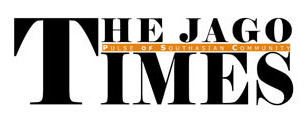Today’s gossip at the local grocery store revolved around a single topic: a proposed tax reduction for the salaried class in Budget 2025-26. From the man buying formula milk for his newborn to the neighborhood salon owner, everyone was preoccupied with the potential changes in direct and indirect taxes outlined in the new budget.
Their inquiries and worries centered on how the new budget would impact them starting July 1, 2025.
Furqan*, a father of three, including a newborn, expressed his predicament: “It’s already challenging for me to afford diapers and formula milk, along with my kids’ school fees and my mother’s medication. I can’t foresee the impact this budget will have on my life.”
Voicing his anxiety, he questioned the indifferent store owner, “Do I have to switch to a locally prepared formula for my baby, even if it doesn’t suit him?”
The store owner simply shrugged and continued attending to his other customers.
The new budget documents indicate no alteration in the 16% customs duty on imported ethylene polymers, which are vital for diaper and sanitary napkin manufacturing, offering a degree of relief to consumers concerned about price increases.
However, manufacturers now face more stringent conditions, including quotas and certifications, to qualify for the existing rate. Industry experts suggest that these added compliance hurdles could subtly affect production costs, potentially influencing consumer prices despite the unchanged duty.
Furqan, a real estate agent, relies on commissions and a modest salary to support his family. He has been encouraging his wife to work as a schoolteacher, hoping she could at least secure a discount on their children’s school fees. “But she isn’t ready with the baby. He is too young for her to leave him at a daycare or at his grandparents’ house,” Furqan lamented.
A teacher nearby informed him that the real estate sector had received relief in the new budget, so he should be pleased. “Do you even file a return?” the teacher asked the distressed father.
Since Furqan’s income falls below the minimum tax threshold, he doesn’t bother filing a nil return.
The government maintained the tax relief for individuals earning up to Rs600,000 annually. For those earning between Rs600,000 and Rs1.2 million, the tax rate has been reduced to 2.5% from 5% in FY25. It’s important to note a discrepancy here: Finance Minister Muhammad Aurangzeb, in his budget speech, stated the new rate was 2.5%, whereas the Finance Bill cited the rate as 1%. In the post-budget address, the minister reiterated the 2.5% figure.
In the days leading up to the budget, media reports, talk shows, and publications from brokerage houses were rife with discussions about who and what would face higher or lower taxes.
Amidst all this discourse, the most prominent discussion was about taxes on the salaried class, a topic that frequently incites opposition against the Federal Board of Revenue (FBR).
Fortunately, the budget for fiscal year 2025-26 offers some alleviation for the salaried class.
For an individual earning Rs100,000 per month, the tax deduction will be Rs500 per month starting July 1, 2025, a decrease from Rs2,500 per month in the current tax year. This signifies an 80% reduction in the tax paid by someone earning Rs100,000 monthly from July 1, 2025.
Similarly, the tax deduction for a person with a monthly salary of Rs150,000 will be Rs6,000 per month, or Rs72,000 in tax year 2026, marking a 40% reduction from Rs10,000 in the current year ending June 30, 2025.
Tax expert M Zeeshan Merchant deemed the concessions for the salaried class in the new budget insignificant. “If we analyze this, after importers and large manufacturing concerns, salaried individuals constitute the largest group of taxpayers. The burden on this group was increased exponentially over the previous two years, particularly last year when they paid significantly more (Rs368 billion) in taxes.”
In the fiscal year ending June 30, 2025, the already hard-pressed salaried individuals were further burdened by the government’s removal of previously allowed exemptions. “I always refer to salaried taxpayers as the honest taxpayers because their taxes are deducted at source.”
“As per my assessment, the maximum relief for an individual in a year would be Rs90,000-Rs100,000.”
“Thus, the relief is inconsequential and not commensurate with what the government had indicated before the proposal was presented in the assembly,” Merchant added.
Exceptions play a significant role in middle and lower-middle-income households.
For those in the teaching profession, the situation will change as the 25% rebate allowed against tax payable by full-time teachers and researchers will be discontinued from FY26.
The cessation of this rebate would adversely affect high-earning academic positions. So, for a teacher earning Rs150,000 per month, the taxes were Rs7,500 per month with a 25% rebate in FY25. However, with the removal of the rebate in FY26, their deduction would be Rs6,000, increasing their take-home salary to Rs144,000 per month. This is because the overall tax rate reduction for this slab might outweigh the rebate loss.
Conversely, for an academic earning a monthly salary of Rs230,000, the tax in tax year 2026 would be Rs400 higher without the rebate. After the 25% rebate, their monthly tax would have been Rs20,000, leaving a take-home salary of Rs210,000 in FY25, compared to Rs209,600 in FY26. This highlights the differential impact based on the income slab and the rebate.
Commenting on this change, a university professor, who wished to remain anonymous, stated that the reduction in the Higher Education Commission’s (HEC) budget was far more concerning than the removal of the rebate. “It could have a detrimental impact on higher education in the country.”
HEC Spokesperson Tariq Iqbal confirmed that the Public Sector Development Fund (PSDP) allocation for HEC for CFY 2024-25 was Rs61.150 billion, and the proposed allocation for the next FY 2025-26 is Rs39.488 billion — which is 35% less than the current year’s allocation.
“A reduction in the size of the allocation or inadequate funding may impede the timely execution and completion of ongoing projects of universities/HEC, which generally leads to cost overruns,” they added.
The HEC has listed 161 ongoing projects on its website. Many of these are development and infrastructure initiatives funded through the PSDP, such as the enhancement of academic and infrastructural facilities, and various scholarship and funding programs.
Academics rely on PhDs from recognized international universities and publications in reputable local and international journals for promotions and career advancement in public and private universities. These endeavors often necessitate government grants and support.
Publications alone can incur costs ranging from $2,000 to $4,000.
The views expressed by academics and researchers are widely shared. Many believe that the tax burden on salaried individuals is disproportionately high and also serves as a testament to the FBR’s failure to collect direct taxes from various sectors of the economy, including agriculture, services, wholesalers, and retailers. Some also question the subsidies provided to the elite in the country under various pretexts. However, some also consider the taxes on the salaried class to be in line with global practices when viewed in isolation.
Topline Securities CEO Mohammad Sohail asserted that all income should be taxed uniformly, according to established slabs.
He highlighted a disparity in how salaried individuals are taxed — specifically, those working for local companies in Pakistan versus those employed by firms abroad. “Currently, employees working in Pakistan and receiving their salary from local companies pay more taxes than those working for offshore firms. This anomaly needed to be addressed,” he added.
The Pakistan Economic Survey 2024-25 indicates that wholesale and retail trade contributed 17.8% to GDP growth in FY25. Despite this, their taxes constituted barely 2% of the total taxes collected by the FBR.
Advance tax collected from retail sales amounted to Rs15.760 billion, representing just 0.99% of total withholding tax and 0.28% of total FBR revenues during July–December 2025.
The same tax from distributors and wholesalers stood at Rs11.274 billion, accounting for only 0.71% of total withholding tax and 0.20% of total FBR revenues collected during the same period.
A significant portion of Pakistan’s economy remains undocumented, thus outside the tax net. There is a consensus among experts that people in Pakistan are reluctant to pay taxes. The agricultural sector remains outside the tax net despite consistent government discussions about its plans to tax this sector.
Overseas Investors Chamber of Commerce and Industry (OICCI) Secretary General M Abdul Aleem stated, “Pakistan has a substantial Rs9 trillion cash-based informal economy, which remains outside the tax net, and once again, the government did not undertake tax-broadening measures.”
“Instead, the same taxpayer industries and individuals are the focus in the new budget,” he said, pointing out the meager relief given in the ‘super tax rate’ by 0.5% and to the salaried individuals.
“Both are much below expectations and ‘will not contain talent migration from the country’.”
One of the vulnerable groups targeted by the government comprises retirees and widows dependent on interest income.
Aleem noted that these individuals were already facing hardships due to low interest rates, which were previously as high as 22%.
“Now they have been subjected to an additional 5% tax on interest income, bringing the total tax on interest income to 20%, up from 15%,” the OICCI official said.
However, there are also some positive developments.
“The government has implemented some constructive measures in the proposed budget, which should resolve certain long-term economic issues, such as the removal of protections to foster competitiveness, as advised by the World Bank in its 2022 report From Swimming in Sand to High and Sustainable Growth,” Aleem added.
Furthermore, the relief extended to the real estate sector is anticipated to spur “a construction boom, which would enhance cement sales and increase employment,” he pointed out.
As July first approaches, public anxieties and concerns regarding the new budget will gradually subside, and daily routines will resume.
No budget can satisfy everyone, and taxes are rarely a welcome subject. However, the public consistently hopes for equality and equity when it comes to government undertakings that directly affect them. Given the government’s need to adhere to the International Monetary Fund’s directives, there is a clear imperative to deliver a well-defined fiscal policy that ensures no one is left behind, promotes industrialization and investment, and broadens the tax base rather than excessively burdening existing taxpayers.



